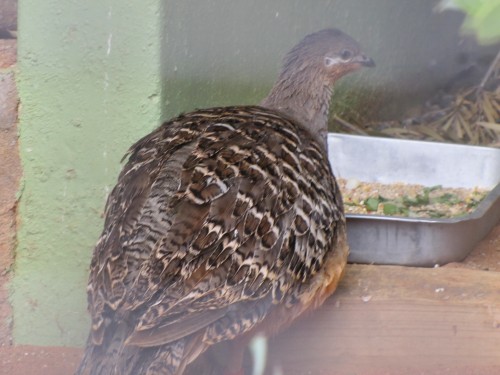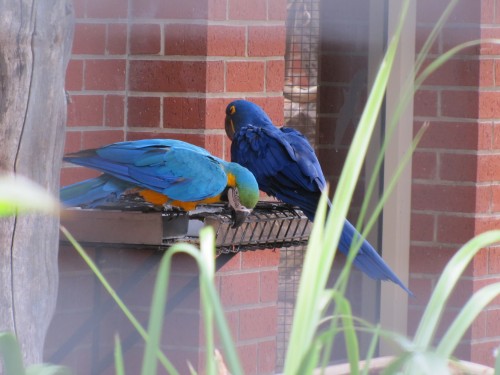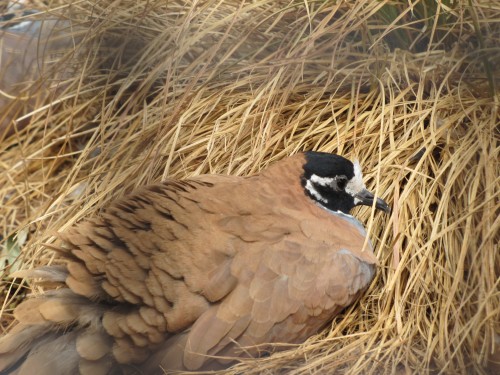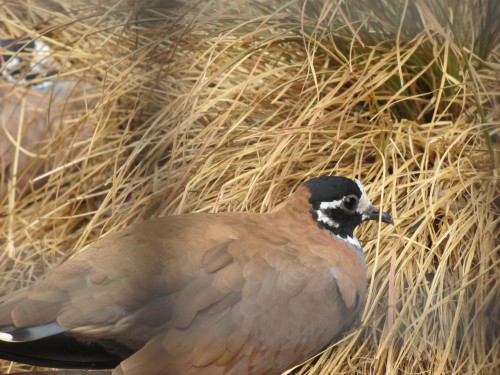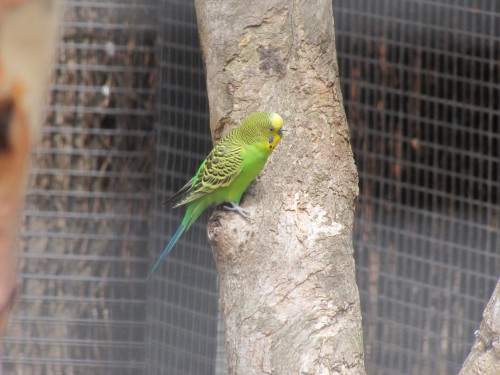Malleefowl in the Adelaide Zoo
The Malleefowl, a turkey-sized mound building bird of the drier parts of Australia, is a widespread but uncommon bird living in the region where I live. It is primarily a ground dwelling bird, feeding mainly on seeds. The male makes a large 2 to 3 metre wide mound of sand and vegetation like leaves, grass, bark and so on which acts like a compost heap.
The rotting vegetation develops heat which incubates the eggs the female lays and buries in the mound. The male works the mound daily during the summer months, adding or removing soil to regulate the temperature in the egg chamber. Not surprisingly, this bird is also known as the Incubator Bird. In all my years of birding I have only seen about a dozen of this species, but amazingly, I saw 6 in a one hour period.
The bird in the photo above is a captive bird in the Adelaide Zoo.
Macaws in the Adelaide Zoo
My home zoo is Adelaide Zoo, along with Monarto Zoo which is a ten minute drive from home. One of the strengths of Adelaide Zoo is its bird collection, mostly of Australian birds.
The zoo also boasts a good collection of non-Australian birds, including several macaw species such as those shown in the photo above. The bird on the left is a Blue and Gold Macaw, while the other is an Hyacinth Macaw. Both of these spectacular parrots are native to South America.
Flock Bronzewing Pigeon, Adelaide Zoo
The Flock Bronzewing pigeon is a bird of the arid grass zones of northern and central Australia. It can sometimes form large flocks, especially when coming in to watering points. It is one species I would really like to see in its natural habitat. This bird, a male, was in an aviary in the Adelaide Zoo.
Budgerigar, Adelaide Zoo
The small Australian parrot known as the Budgerigar would have to be one of the most popular pet birds in the world. They are easy to keep and are delightful companions, ideal for even small apartments, but equally at home in a large aviary.
This small parrot, however, is a native of the drier inland parts of Australia where it can sometimes form spectacular flock in the thousands. Only on one occasion have I seen this species in large numbers. This was on a visit to a remote farming area in north western Victoria. It was a memorable sight.
I am quite pleased with the photo above because it was taken through the wire netting of one of the aviaries in the Adelaide Zoo.
Palm Cockatoo in Adelaide Zoo
I delight in visiting my local zoo in Adelaide. I am a long term member and try to visit several times a year, mainly to hone my photography skills. The Adelaide Zoo has an excellent collection of birds in addition to the animals and reptiles, so birds feature prominently in my photos during these visits.
A few months ago I spent several hours there with my wife. We’d been to see a movie and decided to fill in some extra time at the zoo before travelling home. The zoo is an easy walk from the CBD. Besides, my wife hadn’t been to the zoo for a while, so she was eager to also spend time there.
Over coming days I will feature a few of the birds seen on this visit, as well as another visit a week later. Today’s photo shows a Palm Cockatoo, one species I have not yet seen in the wild. In its natural state it inhabits the far northern tip of Cape York Peninsula in Queensland, an area I have yet to visit.
